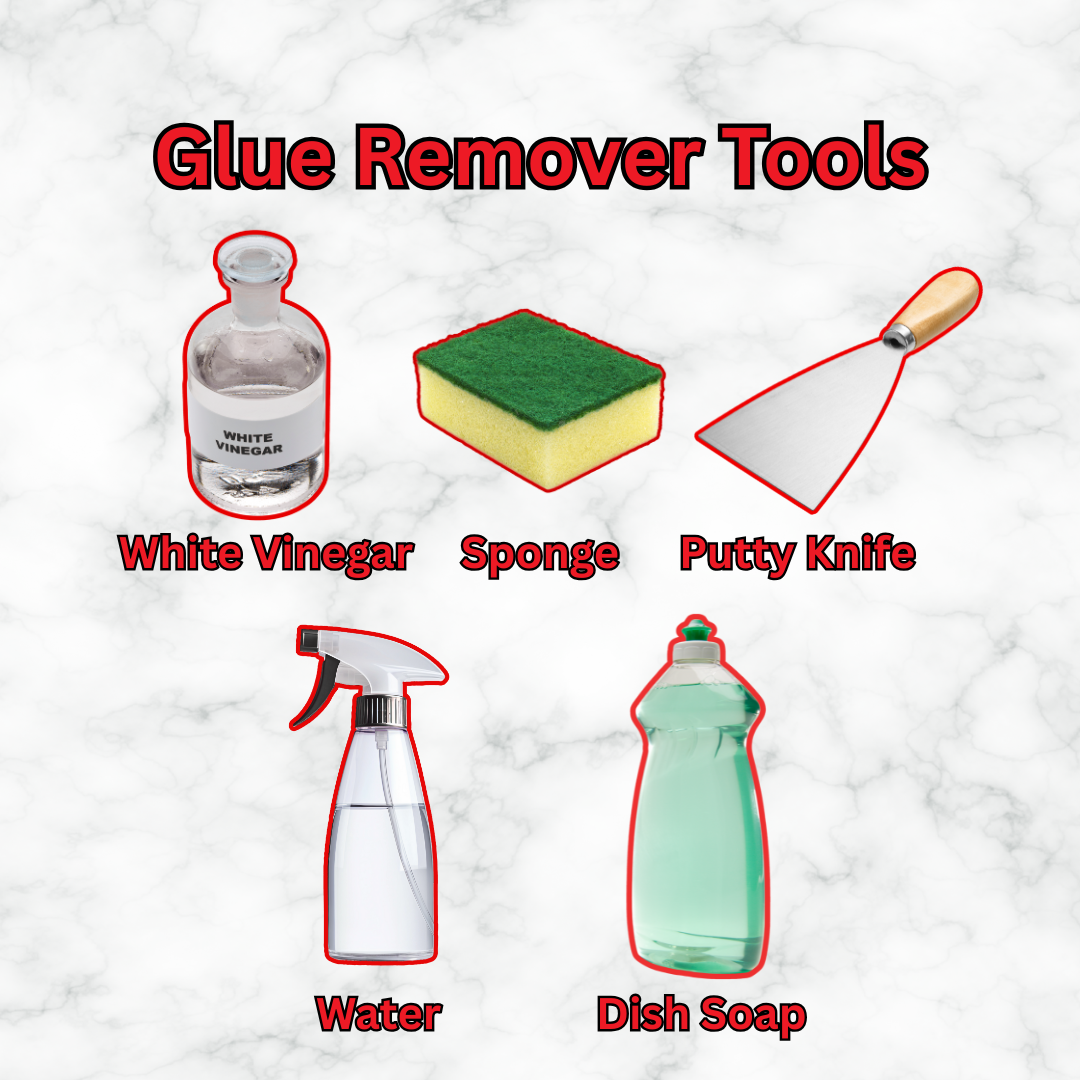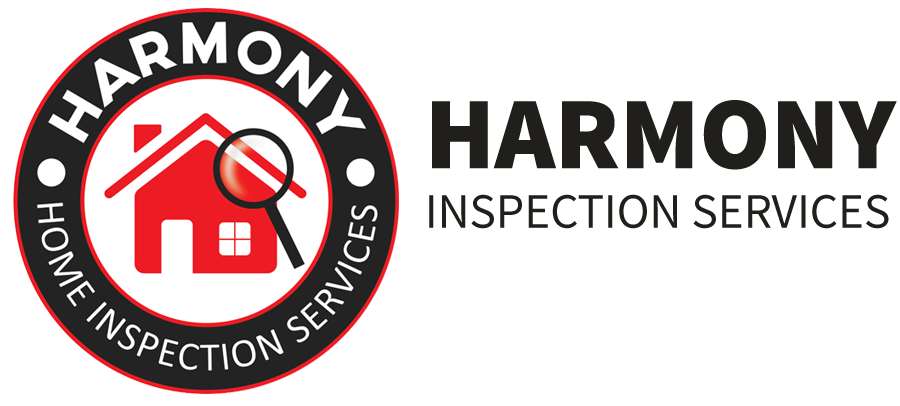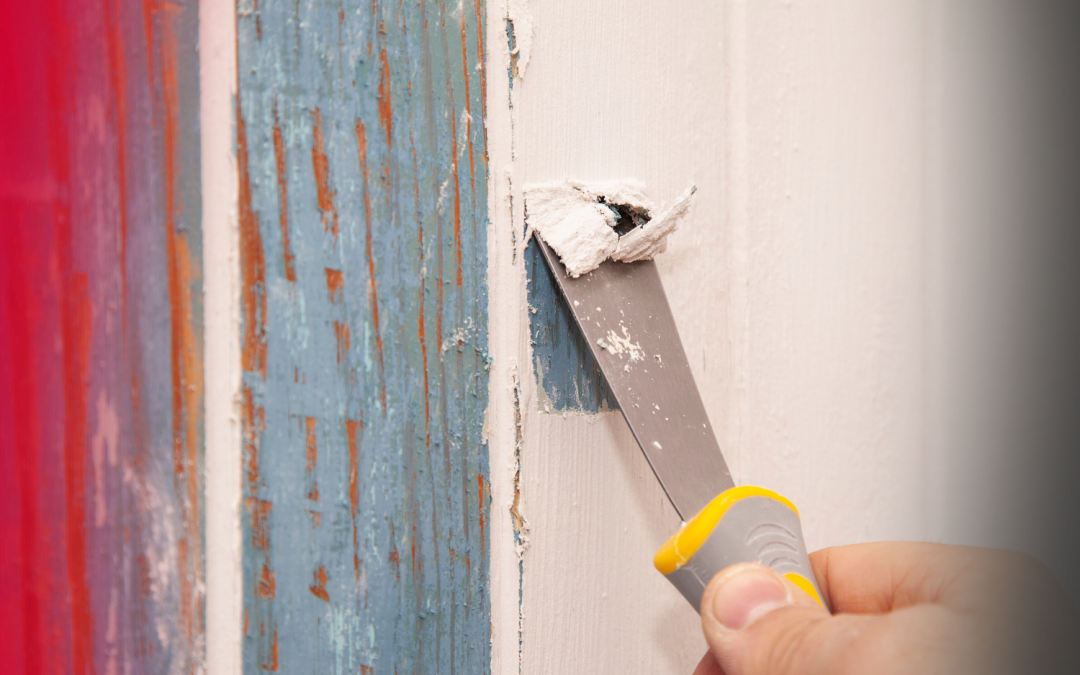If you’ve recently taken down wallpaper, you’ve probably noticed one frustrating leftover: sticky glue on your walls. It might not look like a big deal, but that leftover adhesive can cause major problems if you try to paint or patch over it. The good news is that with the right steps, you can remove wallpaper glue yourself and get your walls ready for a smooth finish.
In this guide, we’ll walk you through how to remove glue from walls before painting or patching, using simple tools and homeowner-friendly tips.
Why Removing Wallpaper Glue Matters More Than You Think
Many homeowners are surprised to find that painting over glue can lead to peeling, cracking, or bubbling paint. Even if the wall looks clean at first glance, small bits of glue can stop paint from sticking properly or cause patching compound to fail. If you’re preparing your home for sale, repainting a room, or just doing some routine maintenance, skipping glue removal can undo all your hard work.
It’s also an important step for home inspection readiness. A poorly prepped wall can signal rushed work or deeper issues, which might raise concerns for buyers or inspectors. Taking the time to do it right sets you up for success.
What You’ll Need to Get Started
If you don’t know how to remove glue from walls, it’s a simple process and you won’t need anything fancy to get started. Most homeowners can remove wallpaper glue with everyday tools. A spray bottle filled with warm water and white vinegar, a sponge or cloth, a plastic scraper or putty knife, and a little dish soap will go a long way. If the glue is stubborn, a commercial wallpaper adhesive remover is another option.

Make sure you also have a towel or drop cloth to protect your floors and a bucket for rinsing. Most of these supplies cost between $20 and $40 if you don’t already have them on hand. It’s best to avoid metal scrapers, which can scratch or gouge the drywall beneath the glue.
How to Remove Glue from Walls Before Painting or Patching
Start by testing your cleaning method on a small section of the wall. This helps you figure out how the surface reacts, especially if your wall is older plaster or drywall, which can be more delicate.
Next, spray the glue-covered area with a mix of warm water and vinegar. Let it sit for about 10 to 15 minutes so the solution can soak into the glue and loosen it. If vinegar alone doesn’t do the trick, consider using a wallpaper remover product designed for tougher adhesives.
Once the glue softens, gently scrape it off with a plastic scraper. Don’t rush this part. Scraping too hard or too quickly can damage the wall underneath. If a spot is stubborn, apply more solution and give it time to work before trying again.
After the glue is gone, clean the wall using a sponge and a small amount of dish soap in warm water. This step helps remove any residue left behind. Finish by wiping the wall down with clean water and a cloth to rinse off the soap.
Let the wall dry completely. Most walls need at least 24 hours to dry before painting or patching. If you’re in a hurry, placing a fan near the wall can help speed things up. Don’t paint over damp walls, that’s another easy way to cause bubbling or peeling later on.
How to Know If There’s Still Glue Left
Even after cleaning, there could still be glue hiding on your wall. One easy way to check is to run your hand over the surface. If it feels sticky, shiny, or slick in spots, there’s probably still some glue there. You can also spray a little water on the area. If it beads up instead of soaking in, that’s another sign the wall isn’t fully clean.
Applying primer is another test. If the primer doesn’t spread evenly or looks patchy in certain spots, go back and re-clean those areas before moving on.
Common Mistakes That Cause Paint and Patch Problems
One of the most common mistakes homeowners make is skipping the final rinse. Even if you’ve scraped off most of the glue, not washing the wall properly can leave a thin film that affects how paint or spackle sticks.
Another mistake is painting before the wall is fully dry. Moisture under the surface can cause paint to bubble or crack. Using the wrong tools, like metal scrapers, can also damage the wall and create more work in the long run. And sometimes, people ignore small areas of glue, thinking they won’t make a difference. But even small patches can show through paint or cause long-term issues with adhesion.
Quick Fix vs. Lasting Repair
If you’re just dealing with one small area, removing glue yourself is quick and affordable. But if you’ve stripped wallpaper from an entire room, it may be worth weighing the time and effort it takes to do it all.
On average, homeowners spend between $0.60 to $3 per square foot. Hiring a professional to prep walls for painting can cost between $4,000 and $12,000, depending on the condition of the walls and the glue.
Also, keep in mind that first impressions matter. A 2023 survey from Zillow found that nearly 63% of homebuyers are discouraged by visible cosmetic issues, even if they’re easy fixes. So, if you’re preparing to sell your home, the effort you put into clean walls now could really pay off later.
Other Recommended Maintenance
Once your walls are clean and dry, it’s a great time to take care of other small tasks. Look for any holes or dents that need patching. Check for signs of mold or mildew, especially if the wallpaper was in a bathroom or basement. Use a bonding primer to create a smooth base before you paint, and inspect trim, outlets, and baseboards for any damage or residue.
These small steps can make a big difference in how your room looks once it’s finished.
When to Call a Professional
While many homeowners can handle glue removal themselves, there are times when it’s best to call in a professional. If the wall is large or there are multiple rooms with glue, the job can quickly become time-consuming. Damage from improper scraping or signs of mold behind the wallpaper may also require expert attention.
If you’re preparing your home for sale or inspection, professional help can make sure your walls are clean and sound. An inspector can also spot hidden issues, like moisture behind the wall, that might not show up until after painting.
Final Thoughts
Removing glue from walls takes time and patience, but the result is worth it. Whether you’re repainting a room, repairing damage, or getting your home ready to sell, clean walls give you a better foundation for whatever comes next.
If you’re not sure what’s behind your walls or you want to feel confident before you paint, schedule a professional home inspection with Harmony Home Inspections. Our team can help identify potential problems early and offer trusted advice for maintaining your home the right way.

